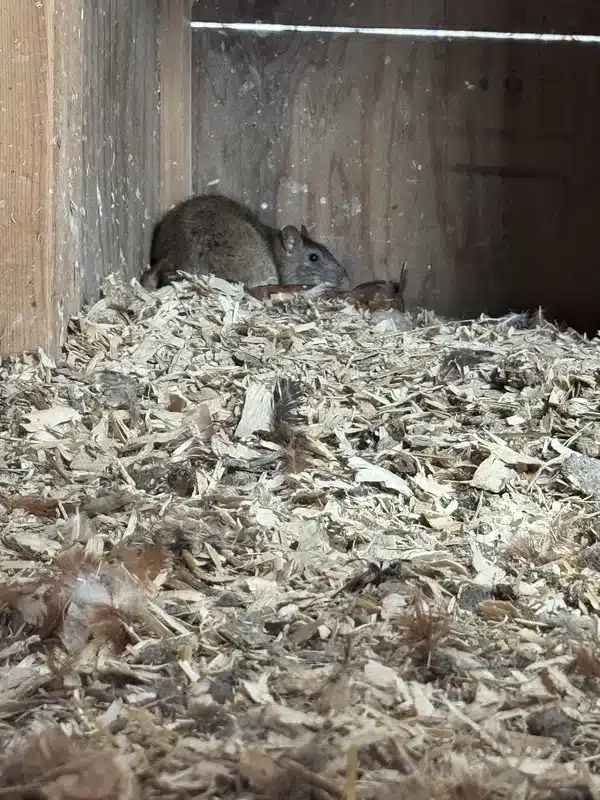Finding rats in attic spaces is one of the most common pest problems we see across the DC Metro area. After nearly a decade in pest control, I’ve learned that most homeowners don’t realize they have an attic rat problem until it’s gotten pretty serious. The scratching sounds at night, the smell, and the potential health risks make this something you want to address quickly.
In our experience serving areas like Old Town Alexandria, we’ve developed a proven four-step approach to handle these situations. What many homeowners don’t realize is that expensive attic re-insulation jobs that some companies push are rarely necessary. The real solution usually comes down to proper baiting and exclusion work.
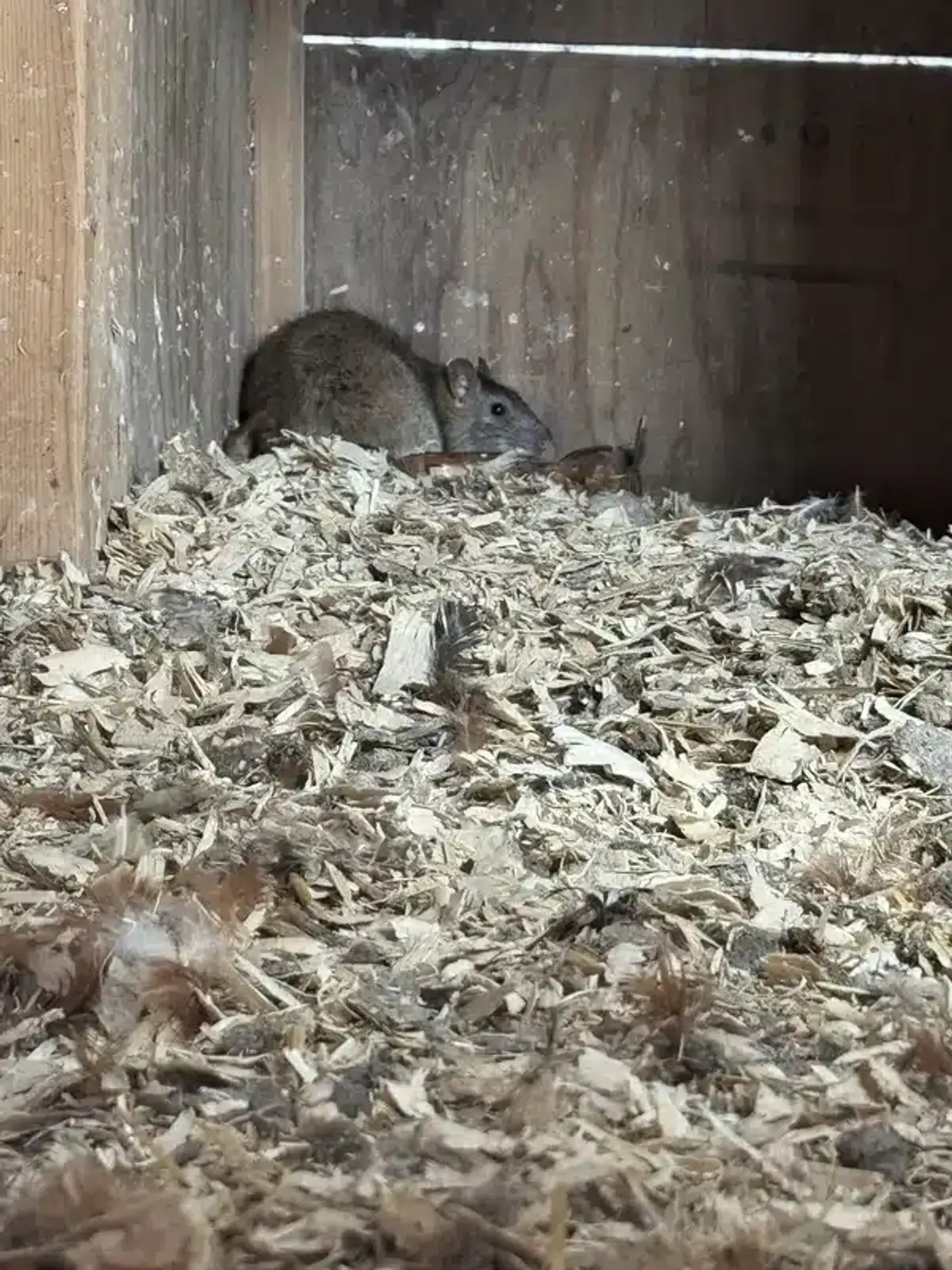
Identifying Rats in Your Attic
The first step in dealing with any attic rat problem is confirming what you’re dealing with. In the Mid-Atlantic region, we typically see two main types of rats that invade attics.
Norway Rats vs. Roof Rats
Norway rats are the heavier, more common urban rats in Virginia, Maryland, and DC. They’re primarily ground dwellers but will climb into attics through wall voids and pipe chases. These rats are blunt-nosed and stockier than their cousins.
Roof rats are slimmer and much better climbers. They’re more common along coastal areas of Maryland and occasionally show up inland. These rats actually prefer nesting above ground in trees, vines, and roof spaces, making them natural attic invaders.
Both species can have 3-6 litters per year with 5-8 pups each. This means a small problem can become a major infestation quickly if you don’t act fast.
| Characteristic | Norway Rats | Roof Rats |
|---|---|---|
| Body Type | Stockier, blunt-nosed | Slimmer, pointed nose |
| Preferred Habitat | Ground level, basements | Above ground, attics |
| Climbing Ability | Limited climbing | Excellent climbers |
| Droppings Size | 18mm, blunt ends | 12mm, spindle-shaped |
| Common In | VA, MD, DC urban areas | Coastal MD, occasional inland |
Signs of Rats in Attic Spaces
When we inspect homes for rats in attic areas, we look for several telltale signs:
- Droppings: Roof rat droppings are about 12mm and spindle-shaped, while Norway rat droppings are larger at 18mm and more blunt.
- Gnaw marks: Fresh chew marks on rafters, boxes, or electrical conduit.
- Grease marks: Dark smudges where rat fur rubs against wood or pipes.
- Nesting materials: Shredded insulation, paper, or leaves gathered in corners.
- Noises: Scratching, scurrying, or squeaking sounds, especially at night.
Early Warning Sign
If you’re hearing sounds during the day, that usually means the colony has grown large enough that some rats are active when they normally wouldn’t be. That’s a red flag for a more serious infestation that requires immediate professional attention.
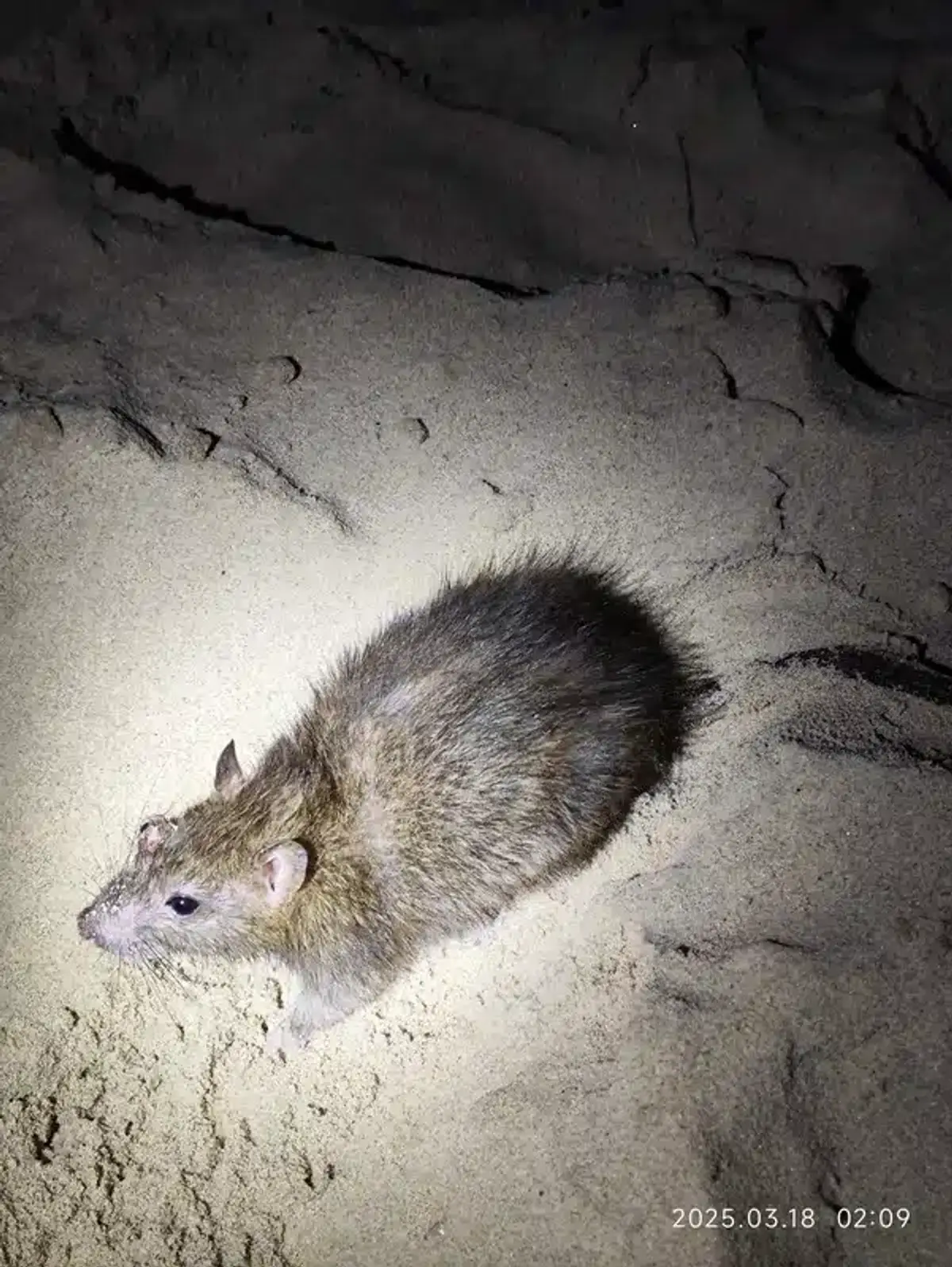
Health Risks from Attic Rat Infestations
The health concerns from rats in attic spaces go beyond just the “ick factor.” These rodents carry diseases that can seriously impact your family’s health.
Disease Transmission from Attic Rats
Rats can transmit several dangerous diseases through their urine, droppings, and saliva. Hantavirus is probably the most serious concern—you can get infected just by breathing in dust contaminated with rat waste.
We’re also seeing more cases of leptospirosis in East Coast cities. This bacterial infection comes from rat urine and can enter your body through cuts or even your eyes and mouth. Additionally, rat-bite fever can occur from direct contact with rats or their saliva.
The proteins in rat dander and urine are major asthma triggers. If your HVAC ducts run through the attic, contaminated air can circulate throughout your home, affecting everyone inside.
Structural Damage from Rats
Beyond health risks, rats in attic areas can cause expensive property damage that many homeowners don’t expect.
Electrical Fire Hazards from Attic Rodents
Rats routinely chew through electrical wiring insulation and build nests in electrical panels, creating serious fire hazards that many homeowners don’t realize until it’s too late.
What does the science say?
According to University of Nebraska research, rodent-damaged wiring is a documented cause of house fires. The study details how rats and mice consistently chew through electrical insulation, leading to shorts, arcing, and ignition sources. This research emphasizes the critical importance of prompt rodent control in residential settings to prevent potentially catastrophic property damage.
Insulation and Energy Loss
Rats tunnel through insulation and use it for nesting material. This reduces your attic’s R-value and drives up energy costs. Once urine soaks into fibrous insulation, it has to be removed because the smell and contamination don’t go away.
Secondary Pest Problems
Dead rats attract other pests like carpet beetles, flies, and carrion beetles. Moisture from rat waste can also support mold growth in your attic space.
Our Four-Step Rodent Removal Process
After handling hundreds of rats in attic cases across the DC Metro area, we’ve developed a systematic approach that actually works. Many companies jump straight to expensive solutions, but effective rat control starts with the basics.
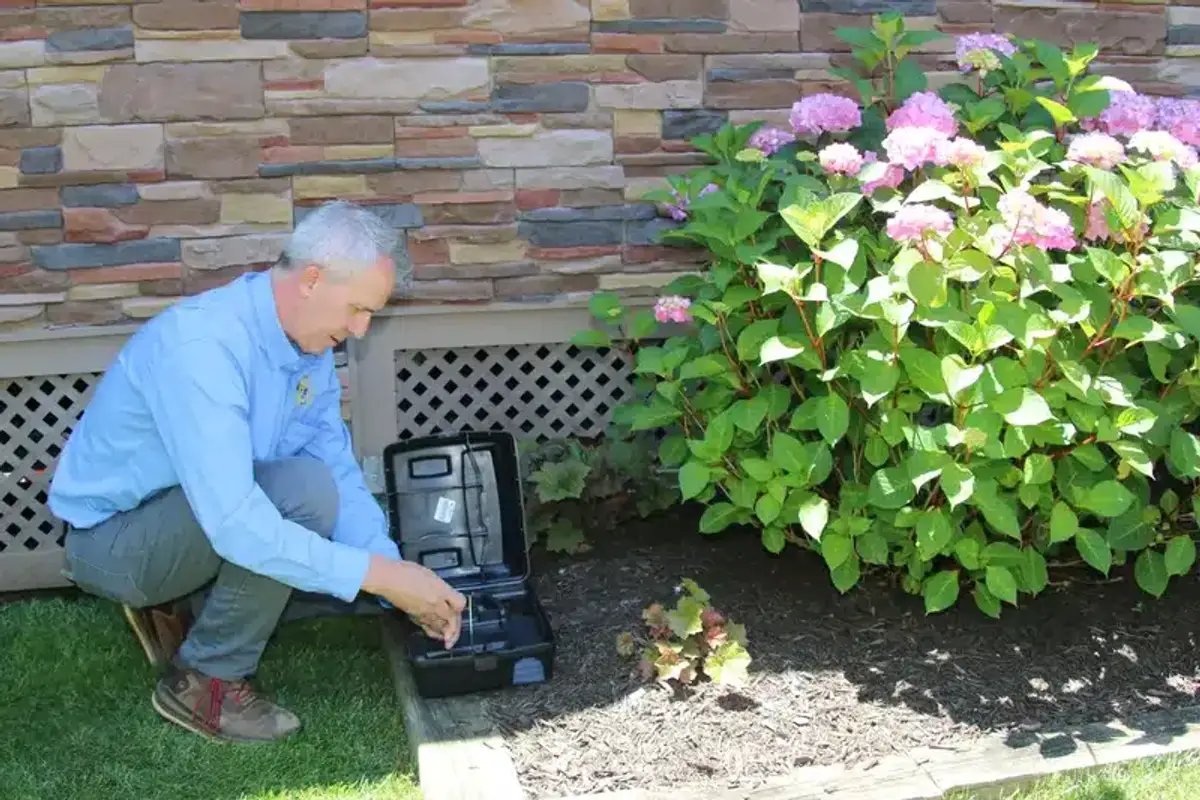
Step 1: Thorough Inspection
We start every job with a complete inspection to identify “hot spots” where we find existing activity. Our technicians look for droppings, gnaw marks, and actual sightings. We also check for food sources like pet food, bird seed, or pantry items that might be attracting rats.
Step 2: Strategic Bait Placement
We place tamper-resistant rodent stations near active areas. For rats inside the house, we primarily use snap traps instead of bait stations. This prevents rats from dying inside walls where they’ll create odor problems.
The key is experimenting with different baits—peanut butter, candy, or even meat—to find what works best for your specific rat population.
Step 3: Follow-Up Monitoring
We typically return at 1 and 3 weeks to check trap results and adjust our approach. This follow-up phase is critical because it tells us whether our initial treatment is working or if we need to modify our strategy.
Step 4: Long-Term Maintenance
This is where most DIY efforts fail. Even after eliminating the current rat population, new rats will move in from surrounding areas. We recommend tri-annual maintenance (three times per year) visits to re-bait stations and monitor activity levels.
In areas like Old Town Alexandria where rat pressure is consistently high, we sometimes recommend monthly or bi-monthly service initially.
Attic Cleanup and Sanitization
Once we’ve eliminated the rats in attic spaces, proper cleanup is essential for health and preventing re-infestation.
Safety Protocols
Proper safety protocols are essential when cleaning up after rat infestations. Never dry sweep rat droppings—this can kick contaminated dust into the air and create serious health risks.
What does the science say?
The CDC’s rodent cleanup guidelines specify that areas must be ventilated for at least 30 minutes before starting cleanup work. Their protocols require wetting contaminated areas with EPA-registered disinfectant or a 1:9 bleach solution for at least 5 minutes before removal. This prevents aerosolization of dangerous pathogens like hantavirus that can be fatal when inhaled.
For heavy infestations, our technicians wear disposable coveralls, nitrile gloves, goggles, and HEPA-filtered respirators. We wet contaminated areas with EPA-registered disinfectant or a 1:9 bleach solution, let it sit for 5 minutes, then carefully wipe and bag all waste.
Insulation Replacement
After HEPA vacuuming remaining dust, we install new insulation to current energy code standards for our region.
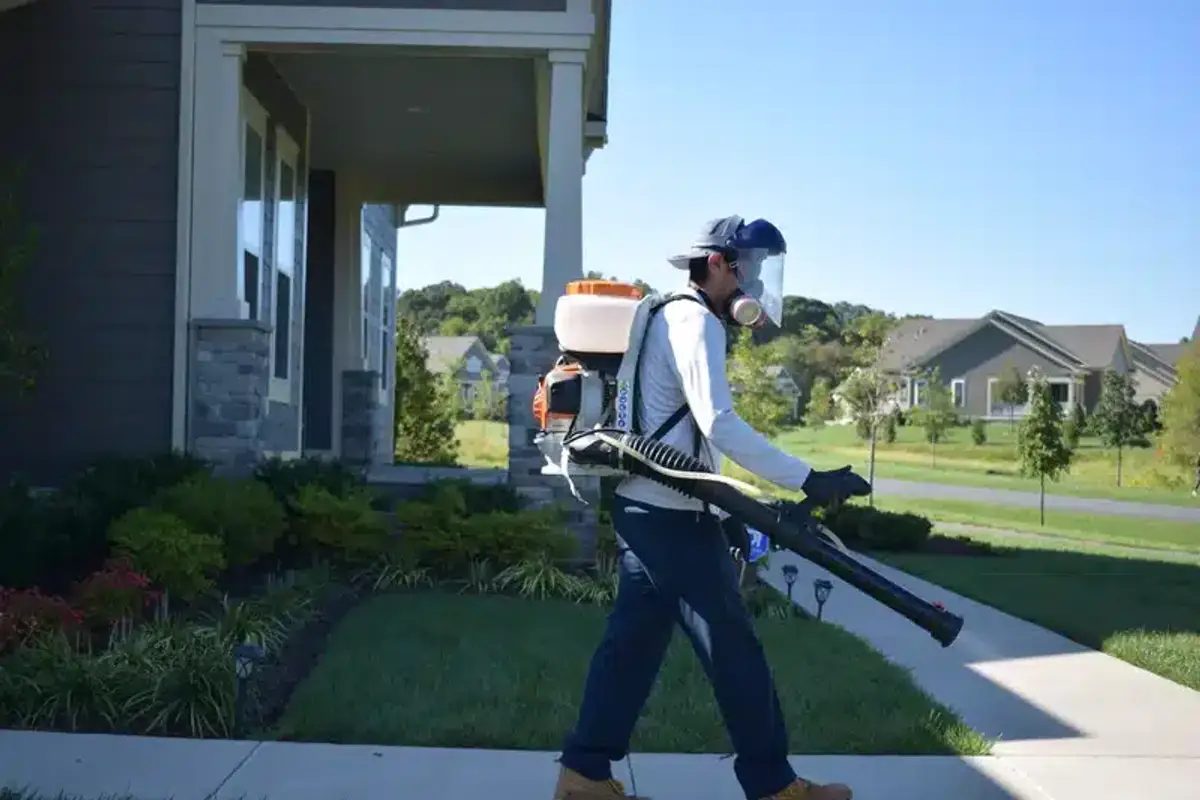
Exclusion: Keeping Rats Out
The most important long-term solution for rats in attic problems is sealing entry points. However, we don’t start with exclusion because you don’t want to trap rats inside your house.
Critical Exclusion Warning
Never seal entry points before eliminating existing rats! This common mistake can trap rats inside your walls where they’ll die and create terrible odors. Always follow this sequence:
- Step 1: Eliminate the current rat population with baiting and trapping
- Step 2: Wait 2-3 weeks to ensure no remaining activity
- Step 3: Seal all entry points with chew-resistant materials
- Step 4: Implement ongoing monitoring for new activity
Critical Measurements
Rats can squeeze through openings as small as ½ inch. We focus on sealing gaps at ridge vents, soffit returns, cable penetrations, pipe entries, and gable louvers. The materials matter—we use 18-22 gauge hardware cloth, knitted copper mesh, or sheet metal that rats can’t chew through.
Common Rat Entry Points to Attics
Most rats in attic situations start with access points homeowners don’t notice:
- Gaps where cables or pipes enter the roof line
- Warped or missing screens on vents
- Construction gaps around chimneys
- Damaged ridge vent ends
- Tree branches touching the roof
Proper landscape management is a critical component of long-term rat prevention strategies.
What does the science say?
According to extension service research, maintaining a minimum 3-foot vegetation-free perimeter around structures and pruning tree limbs at least 6 feet from rooflines significantly reduces rat access to buildings. The research shows that roof rats are excellent climbers and will use vegetation as “highways” to access attic spaces, making landscape management a scientifically-proven prevention method.
Rat Prevention Strategies for Your Attic
Preventing future rats in attic problems requires addressing the conditions that attract them in the first place.
Sanitation and Food Sources
Rats need consistent food and water sources. Store all food in metal or thick plastic containers. Bring pet food bowls inside at night, and clean up fallen fruit from trees regularly. Bird feeders are major rat attractants—either eliminate them or use baffles to prevent access.
Habitat Modification
Keep firewood at least 18 inches off the ground and away from your house. Trim vegetation so it doesn’t touch your roof or walls. Fix any moisture problems in crawl spaces or basements that might attract rats seeking water.
Essential Prevention Checklist
- Food Storage: Store all food in metal or thick plastic containers, bring pet food inside at night
- Landscape Management: Keep firewood 18+ inches off ground, trim tree branches 6+ feet from roof
- Water Sources: Fix moisture problems in crawl spaces and basements promptly
- Entry Point Sealing: Use chew-resistant materials like hardware cloth on gaps larger than ½ inch
- Professional Monitoring: Schedule tri-annual inspections (three times per year) to catch problems early
These simple changes remove the conditions that make your property attractive to rats in the first place. Combined with regular monitoring, they’re much more effective than just trying to kill rats after they’ve moved in.
For more detailed prevention strategies, check out our guide on keeping rodents outside your home.
When to Call Professional Help for Attic Rodent Problems
While some homeowners try DIY solutions first, rats in attic situations often require professional intervention. If you’re hearing activity during daylight hours, finding droppings throughout the house, or dealing with recurring problems, it’s time to call in experts.
Our approach focuses on what actually works rather than expensive upsells. We’ve found that proper baiting and exclusion work solve most rat problems without breaking the bank. Companies that immediately push for complete attic renovation are often overselling services you don’t need.

We use products that have passed through our internal research team—materials we’d feel comfortable using in our own homes. All our registered technicians carry proper licensing and follow EPA guidelines for rodenticide use.
For homeowners dealing with rats in attic problems, the most important thing is acting quickly. These populations grow fast, and early intervention is always easier and less expensive than dealing with a full-blown infestation.
If you’re hearing sounds in your attic or finding signs of rat activity, don’t wait for the problem to get worse. Our team has the experience and tools to eliminate your rat problem and prevent it from coming back. For more information about different rodent species, visit our mice vs rats identification guide.
If you’re dealing with rats in attic spaces and need professional help, don’t let the problem get worse. Our experienced team can eliminate your rat problem and set up prevention measures to keep them from coming back. Call us at 703-683-2000 for a consultation with one of our licensed technicians, or email us at info@bettertermite.com to discuss your specific situation.
Frequently Asked Questions
How do I know if I have rats or mice in my attic?
+
The main differences are in the droppings and sounds. Rat droppings are larger (about ½ inch) and capsule-shaped, while mouse droppings are smaller (¼ inch) and pointed. Rats make louder scratching and scurrying sounds due to their size. For detailed identification help, check our guide to identifying rat species at /different-types-of-rats/.
Can I just seal up the holes to keep rats out of my attic?
+
Exclusion is important for long-term prevention, but you should never start with sealing holes. If you trap rats inside your attic, they'll die in walls and create terrible odors. Always eliminate the existing population first, then seal entry points as part of a comprehensive approach.
Do I need to replace all my attic insulation if I have rats?
+
Complete attic re-insulation is rarely necessary and often oversold by some companies. We only remove insulation that's heavily contaminated with urine or used for nesting. Most rat problems can be solved with targeted removal and proper sanitization of affected areas.
How long does it take to get rid of rats in the attic?
+
Most active infestations can be controlled within 2-4 weeks with proper baiting and trapping. However, long-term prevention requires ongoing tri-annual maintenance (three times per year) to prevent new rats from moving in. Areas with high rat pressure may need more frequent service initially.
Are rats in the attic dangerous to my family's health?
+
Yes, rats carry several serious diseases including hantavirus, leptospirosis, and rat-bite fever. You can become infected by breathing contaminated dust or through direct contact with rat waste. Rat dander and urine are also major asthma triggers, especially if your HVAC system circulates attic air.
What attracts rats to attics in the first place?
+
Rats seek warm, protected nesting sites with nearby food and water sources. Attics provide ideal shelter, especially during fall and winter. Common attractants include pet food, bird feeders, fruit trees, and accessible garbage. Poor exclusion around roof lines gives them easy access points.
Can rats chew through electrical wires in my attic?
+
Absolutely. Rats routinely strip insulation from electrical wiring, which can cause shorts and fires. They also build nests in electrical panels. According to University of Nebraska research, rodent-damaged wiring is a documented cause of house fires. This makes prompt removal critical.
How much does professional rat removal cost?
+
One-time rodent services typically range from $250-$400, but ongoing maintenance is usually necessary for lasting results. Recurring tri-annual plans (three times per year) often start around $39/month after an initial setup fee. The exact cost depends on the severity of the infestation and your property's specific needs.
With five years of hands-on experience in the pest control industry, George Schulz is a registered technician with the Virginia Pest Management Association and a proud third-generation professional in a family business that's been protecting homes for over 57 years. He manages and trains a team of service pros while also leading internal research efforts—recently spearheading a deep-dive review of thousands of documents on pest control materials to hand-pick the most kid and pet friendly, most effective solutions tailored specifically for homes in the DC metro area.
